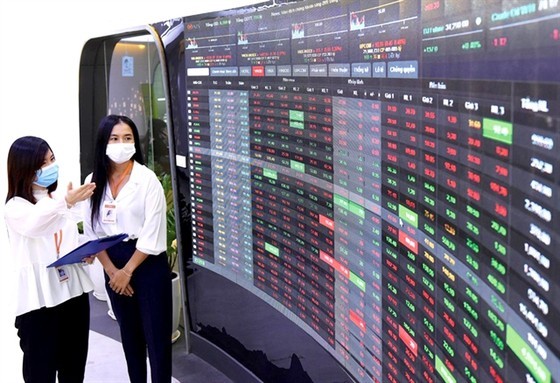 |
| Illlustration |
The market has exploded in recent days with skyrocketing liquidity. This is due to the stock market receiving information of two simultaneous decisions to reduce interest rates within a period of two weeks.
New cash inflow
The State Bank of Vietnam cut the interest rate for the first time on March 15, 2023, but in the next twelve sessions the liquidity did not change, and the average matching level on HoSE and HNX during this time only reached around VND9,000 bln per day. This is not a remarkable level of liquidity, because the average transaction in the first half of March was only VND8,500 bln per session, an increase of less than 6 percent despite news of interest rate reduction. The reason is that the operating interest rates have little effect in practice, such as the rediscount rate, the overnight lending rate in interbank electronic payment, and loans to cover capital shortfalls in the clearing, while the deposit interest rate remains unchanged.
But the difference in the decision to reduce interest rates for the second time was announced on March 31, 2023, and applicable from April 3, 2023, besides reducing the refinancing interest rate, the ceiling interest rates on demand deposits and under six months are also adjusted down. Along with this, commercial banks also actively reduced interest rates for terms of one year or more.
These are the interest rates that directly affect the psychology of residents as well as investors. Instead of being able to enjoy interest rates above 9 percent or higher for a one-year term, people can only deposit interest rates below 8 percent, even around 7 percent per year. Lower savings interest rates have two main effects, one is to reduce the demand for deposits, and the other is to increase the attractiveness of the securities investment channel compared to the savings channel based on valuation.
With this bold decision, cash flow increased significantly in the stock market, pushing up liquidity. In just three trading sessions after the decision to lower interest rates for the second time, the matching liquidity on the two listed exchanges skyrocketed to an average of VND13,700 bln per day, which is an increase of 52 percent compared to the average level of VND9,000 bln per day before.
Along with the strong increase in general liquidity, the cash flow from foreign investors decreased significantly. After the first interest rate cut, liquidity was weak and foreign investor cash flow accounted for an average of around 18 percent of daily transactions on HoSE. Last week, this proportion was only about 6 percent. Therefore, liquidity increased without an increase in foreign investment, which means that the trading share of domestic investors has increased.
If analyzed more closely, the new capital inflow of foreign investors shows a rather serious decrease. For instance, with the Fubon fund, an ETF that is the focus of new capital flow, from March 15 to March 29, the fund regularly mobilized about VND133 bln to buy on the Vietnam stock market every day. However, from March 29 onwards, each day the fund only mobilized several tens of billions of dongs, and even on April 3-4, there was no money.
So, it is to be seen whether the cash flow from the group of domestic investors is the new cash flow. It is difficult to determine this, but the number of new accounts opened in March 2023 of domestic individual investors is still very low following a strong downward trend from the beginning of 2023.
The reduction in interest rates twice in two weeks is unprecedented, and this decision is also very unexpected, so if there is a stimulus for new investors to enter the market, it will probably only be reflected in the number of new accounts from April 2023 onwards. In other words, the strong increase in liquidity was thanks to the cash flow in old accounts, but it certainly brought a new mood, with expectations of a new growth cycle of the stock market associated with the monetary easing cycle.
Liquidity increase
Information from brokers of securities companies last week said that customer demand for margins has started to strengthen. This could be a contributing factor to daily trading liquidity. However, compared to the average liquidity threshold of VND20,000 bln to VND30,000 bln in mid-2022, the current figure is too small, even less compared to the glorious period of VND30,000 bln to VND50,000 bln in the last months of 2021 and early 2022.
An increase in liquidity is possible in the near term, but a liquidity boom is another story. The first factor is that to increase the scale of margin use, the investor assets must also increase, be it more equity or pledged shares increase in value. Now is not the time for cash flow from savings to flow strongly to the securities channel, because according to the six-month deposit term from the top of interest rates, the time will fall in June or July 2023. When the savings books mature, new investors can consider choosing a place to put their capital.
The second factor is that growth prospects need numbers to justify acceleration. In the first quarter of 2023, growth was too weak, production and business activities were poor, and credit growth was very slow. Previously, the stock market was valued based on the whole year’s growth rate of about 6.5 percent, which means that the remaining three quarters must grow 6.7 percent, 7.5 percent, and 7.9 percent, respectively. This is the goal of the Ministry of Planning and Investment. If growth in the second quarter of 2023 is still low or not impressive, it will be a disappointing shock to the stock market. In other words, cash flow still has reason to be cautious in the coming period.
























